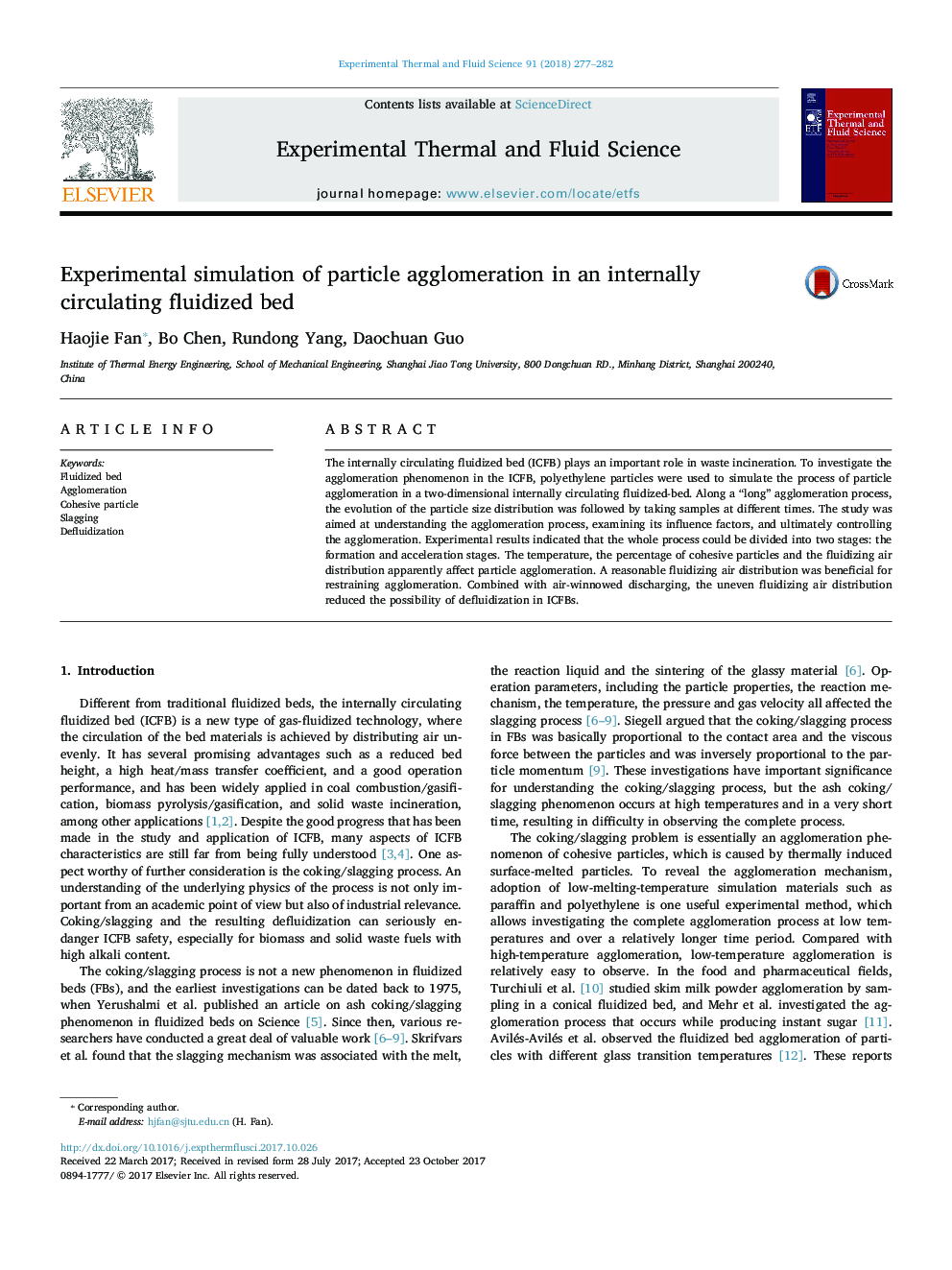| Article ID | Journal | Published Year | Pages | File Type |
|---|---|---|---|---|
| 7051898 | Experimental Thermal and Fluid Science | 2018 | 6 Pages |
Abstract
The internally circulating fluidized bed (ICFB) plays an important role in waste incineration. To investigate the agglomeration phenomenon in the ICFB, polyethylene particles were used to simulate the process of particle agglomeration in a two-dimensional internally circulating fluidized-bed. Along a “long” agglomeration process, the evolution of the particle size distribution was followed by taking samples at different times. The study was aimed at understanding the agglomeration process, examining its influence factors, and ultimately controlling the agglomeration. Experimental results indicated that the whole process could be divided into two stages: the formation and acceleration stages. The temperature, the percentage of cohesive particles and the fluidizing air distribution apparently affect particle agglomeration. A reasonable fluidizing air distribution was beneficial for restraining agglomeration. Combined with air-winnowed discharging, the uneven fluidizing air distribution reduced the possibility of defluidization in ICFBs.
Related Topics
Physical Sciences and Engineering
Chemical Engineering
Fluid Flow and Transfer Processes
Authors
Haojie Fan, Bo Chen, Rundong Yang, Daochuan Guo,
